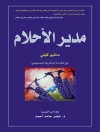Clear and effective instruction on MADM methods for students, researchers, and practitioners.
A Handbook on Multi-Attribute Decision-Making Methods describes multi-attribute decision-making (MADM) methods and provides step-by-step guidelines for applying them. The authors describe the most important MADM methods and provide an assessment of their performance in solving problems across disciplines. After offering an overview of decision-making and its fundamental concepts, this book covers 20 leading MADM methods and contains an appendix on weight assignment methods. Chapters are arranged with optimal learning in mind, so you can easily engage with the content found in each chapter. Dedicated readers may go through the entire book to gain a deep understanding of MADM methods and their theoretical foundation, and others may choose to review only specific chapters. Each standalone chapter contains a brief description of prerequisite materials, methods, and mathematical concepts needed to cover its content, so you will not face any difficulty understanding single chapters. Each chapter:
* Describes, step-by-step, a specific MADM method, or in some cases a family of methods
* Contains a thorough literature review for each MADM method, supported with numerous examples of the method’s implementation in various fields
* Provides a detailed yet concise description of each method’s theoretical foundation
* Maps each method’s philosophical basis to its corresponding mathematical framework
* Demonstrates how to implement each MADM method to real-world problems in a variety of disciplines
In MADM methods, stakeholders’ objectives are expressible through a set of often conflicting criteria, making this family of decision-making approaches relevant to a wide range of situations. A Handbook on Multi-Attribute Decision-Making Methods compiles and explains the most important methodologies in a clear and systematic manner, perfect for students and professionals whose work involves operations research and decision making.
Table of Content
Chapter 1: An overview of the art of decision-making
Summary
1.1. Introduction
1.2. Classification of MADM methods
1.2.1. Preference evaluation mechanism
1.2.2. Attributes’ Interactions
1.2.3. The mathematical nature of attributes’ values
1.2.3.1. Deterministic vs. non-deterministic
1.2.3.2. Fuzzy vs. crisp
1.2.4. Number of involved decision-makers
1.3. Brief chronicle of MADM methods
1.4. Conclusion
References
Chapter 2: Simple Weighting Methods: Weighted Sum and Weighted Product Methods
Summary
2.1. Introduction
2.2. The weighted sum method
2.3. The Weighted product method
2.4. Conclusion
References
Chapter 3: Analytic Hierarchy Process (AHP)
Summary
3.1. Introduction
3.2. The hierarchical structure
3.3. The pairwise comparison
3.4. Inconsistency
3.5. Quadruple axioms of the AHP
3.6. Stepwise description of the AHP method
3.7. Conclusion
Reference
Chapter 4: Analytic Network Process (ANP)
Summary
4.1. Introduction
4.2. Network vs. hierarchy structure
4.3. Stepwise instruction to the ANP method
4.4. Conclusion
References
Chapter 5: The Best-Worst Method (BWM)
Summary
5.1. Introduction
5.2. Basic principles of the BWM
5.3. Stepwise description of the BWM
5.4. Conclusion
References
Chapter 6: TOPSIS
Summary
6.1. Introduction
6.2. Stepwise instruction to the TOPSIS method
6.3. A common misinterpretation of TOPSIS results
6.4. Conclusion
Reference
Chapter 7: VIKOR
Summary
7.1. Introduction
7.2. Stepwise description of the VIKOR method
7.3. Conclusion
References
Chapter 8: ELECTRE
Summary
8.1. Introduction
8.2. A brief history of the ELECTRE family of methods
8.3. ELECTRE I
8.4. ELECTRE II
8.5. ELECTRE III
8.6. ELECTRE IV
8.7. Conclusion
References
Chapter 9: PROMETHEE
Summary
9.1. Introduction
9.2. Common ground of the PROMETHEE family
9.3. PROMETHEE I
9.4. PROMETHEE II
9.5. PROMETHEE III
9.6. PROMETHEE IV
9.7. Conclusion
Reference
Chapter 10: Superiority and Inferiority Ranking (SIR)
Summary
10.1. Introduction
10.2. Foundational bases of the SIR method
10.3. Stepwise instruction to SIR method
10.4. Conclusion
References
Chapter 11: PAPRIKA
Summary
11.1. Introduction
11.2. Stepwise description of PAPRIKA
11.3. Conclusion
References
Chapter 12: PAPRIKA
Summary
12.1. Introduction
12.2. Grey system theory: The foundation and basic principles
12.3. Gray relational modeling
12.4. Grey theory in relation to MADM
12.5. Conclusion
References
Appendix I: Weight assignment approaches
Appendix II: A benchmark example and a comparison between objective- and subjective-based MADM methods
About the author
OMID BOZORG-HADDAD, Ph D, is Professor in the Department of Irrigation & Reclamation Engineering at University of Tehran, Iran.
BABAK ZOLGHADR-ASLI, M.Sc., received the M.Sc. in Irrigation Engineering, Water Resources Management, from Tehran University, Iran.
HUGO A. LOÁICIGA, Ph D, is Professor of Geography in the Department of Geography at the University of California, Santa Barbara, USA.












